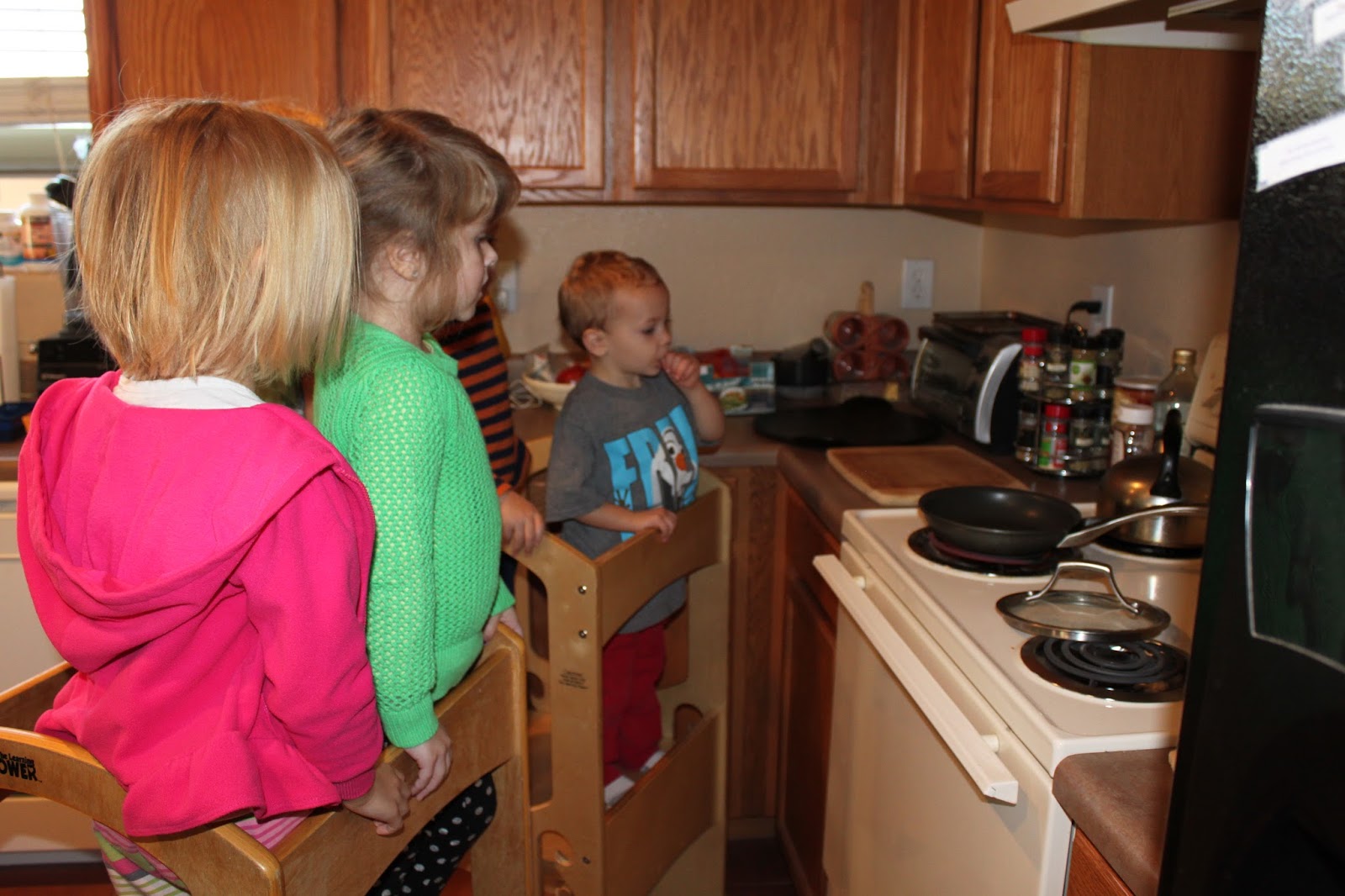Monkey is obsessed with 'explosion' experiments....seriously....obsessed. He attended camp last summer and was given a chance to make a volcano erupt and has repeated the experiment a number of times at home. In his kindergarten class this year, he had an opportunity to renew his interest in 'explosions' when the class conducted a similar experiment. I've had to come up with new and interesting ways of combining baking soda and vinegar, so why not make some baking soda ice?
I wasn't exactly sure if there was an appropriate way to make baking soda ice, so I mixed up a solution and poured it into the ice trays. At first, it looked a bit too watery, so I tossed another dollop of baking soda into each mold and hoped for the best.
I supplied the children with some vinegar mixed with liquid watercolor and they went to work.
The reaction is somewhat slower than you might expect, but once it begins, the children are delighted. And it's quite lovely.
Bear wanted to find out what would happen if he dumped all of his vinegar into his tray.
And, of course, Monkey was thrilled when class was over and he got to finish up the rest of the baking soda ice cubes.
Next time, we might try to freeze the vinegar instead!!
Need a super simple preschool science experiment? Try Ice Cube Color Mixing!
Make ice cubes in primary colors, have the children each choose two cubes and observe!
I had the children write their own labels so they could stop back and check on their cups.
We were SO excited to see our results!
Melting and color mixing all in one experiment! So simple!
No time to make colorful ice cubes? Need science NOW? Ok, try this one: Solid, Liquid, Gas Demonstration. All week, we talked about the three different states of water, but it is a fairly abstract concept for preschoolers until it is demonstrated.
I slid my two Learning Towers over to the stove so the children could get a good (but safe) view. Add an ice cube to a shallow pan and turn up the heat! Observe!
We talked about what was happening to the ice, it was melting, it was becoming steam, it was evaporating - oh, the language development! I even held a glass lid over the steam to 'catch it in a cloud' and then allowed it to 'rain' back down into the pan. The children were particularly overjoyed with the very last little puff of steam once the water evaporated completely. They literally yelled, 'Do it again!' in unison. So, we did.
I've been teaching for over half my life and it still never ceases to amaze me how the simplest things to us as adults can be the most wondrous to a child.
So go try some science! Be amazed!


















































